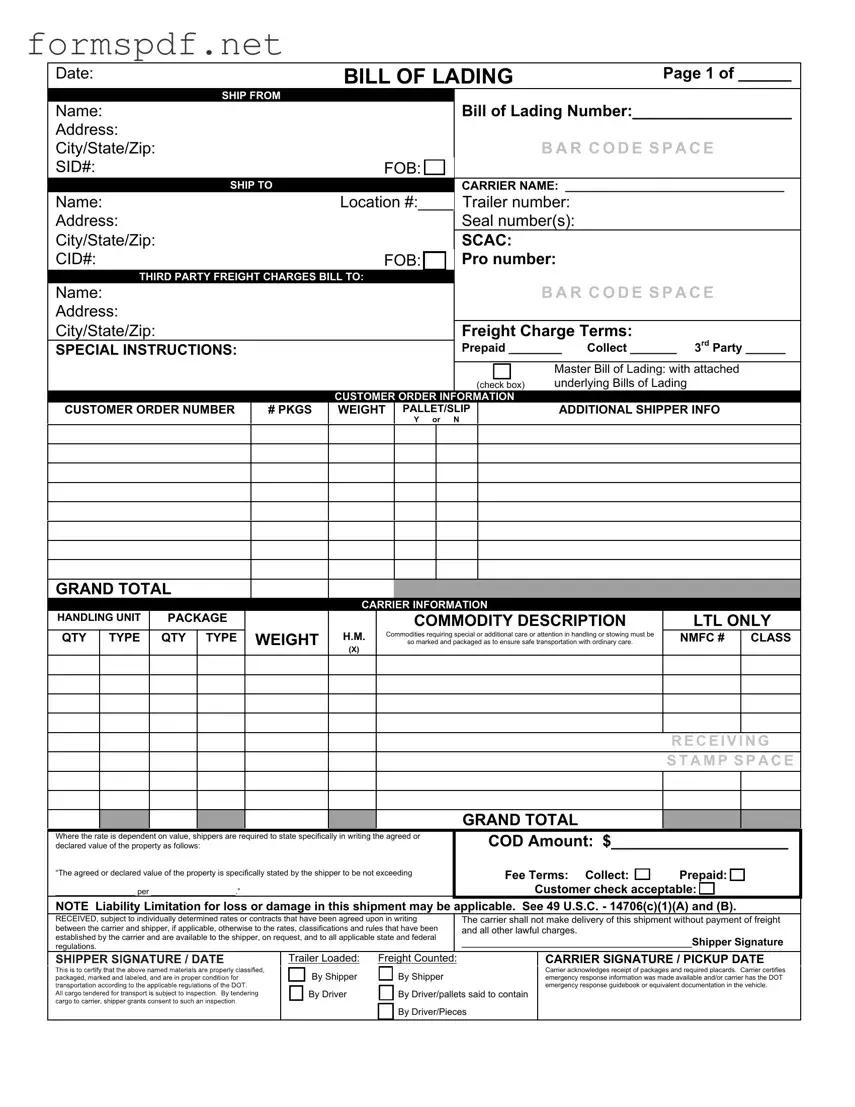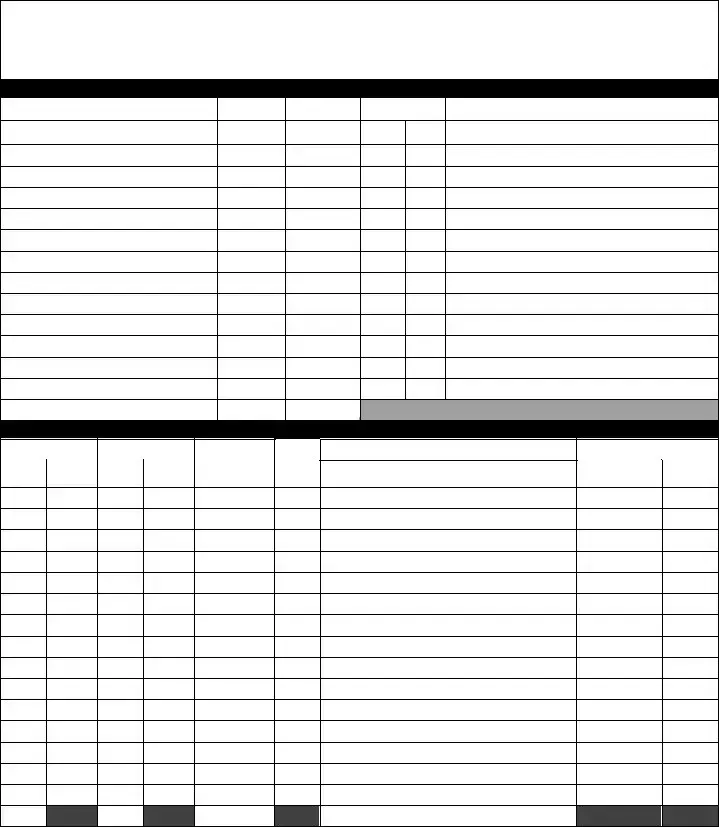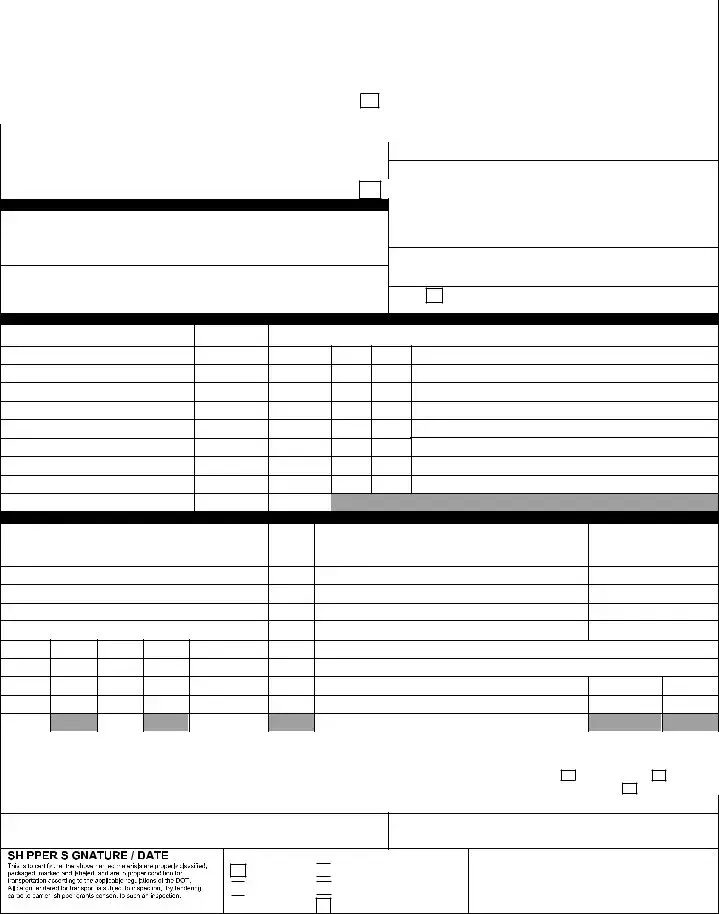Free Bill of Lading with a Supplement PDF Form
A Bill of Lading with a Supplement is a legal document that outlines the details of a shipment, including the goods being transported and the terms of the transport. This form serves as a receipt for the goods and a contract between the shipper and the carrier. For those looking to efficiently manage their shipping processes, filling out this form is essential; click the button below to get started.
Launch Editor Now


 to certify that the above named materials are properly classified, packaged, marked and labeled, and are in
to certify that the above named materials are properly classified, packaged, marked and labeled, and are in proper condition for transportation according to the applicable regulations of the DOT.
proper condition for transportation according to the applicable regulations of the DOT.
 By Shipper
By Shipper
 By Driver
By Driver 
 By Driver/pallets said to contain
By Driver/pallets said to contain